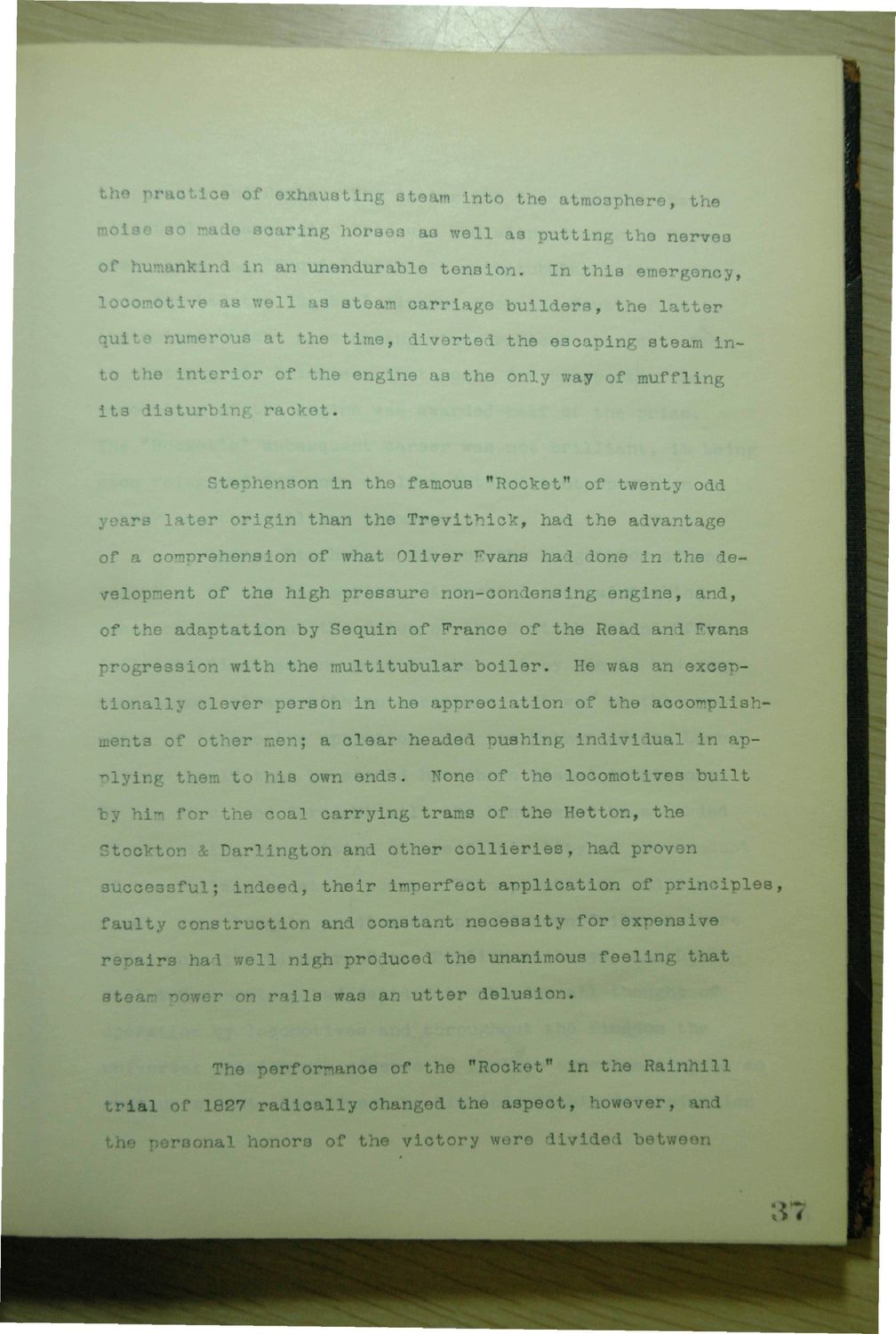Caption: Dedication - Transportation Building Dedication Addresses
This is a reduced-resolution page image for fast online browsing.

EXTRACTED TEXT FROM PAGE:
the practice of exhausting steam into the atmosphere, the moiae so made soaring horses as well as putting the nerves of humankind in an unendurable tension. In this emergency, locomotive as well as steam carriage builders, the latter quite numerous at the time, diverted the escaping steam into the interior of the engine as the only way of muffling its disturbing racket. Stephenson in the famous "Rocket" of twenty odd years later origin than the Trevithick, had the advantage of a comprehension of what Oliver Fvans had done in the development of the high pressure non-condensing engine, and, of the adaptation by Sequin of France of the Read and Evans progression with the multitubular boiler. He was an excep- tionally clever person in the appreciation of the accomplishments of other men; a clear headed pushing individual in applying them to hie own ends. None of the locomotives built by him for the coal carrying trams of the Hetton, the Stockton & Darlington and other collieries, had proven successful; indeed, their imperfect application of principles, faulty construction and constant necessity for expensive repairs had well nigh produced the unanimous feeling that steam power on rails was an utter delusion. The performance of the "Rocket" in the Rainhill trial of 1827 radically changed the aspect, however, and the personal honors of the victory were divided between 3
|